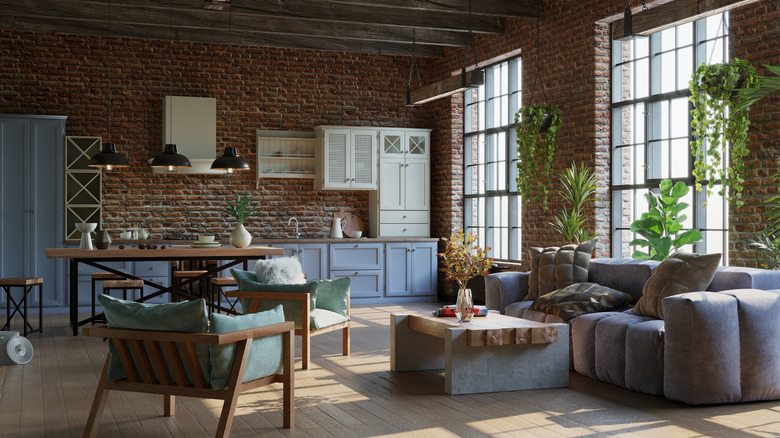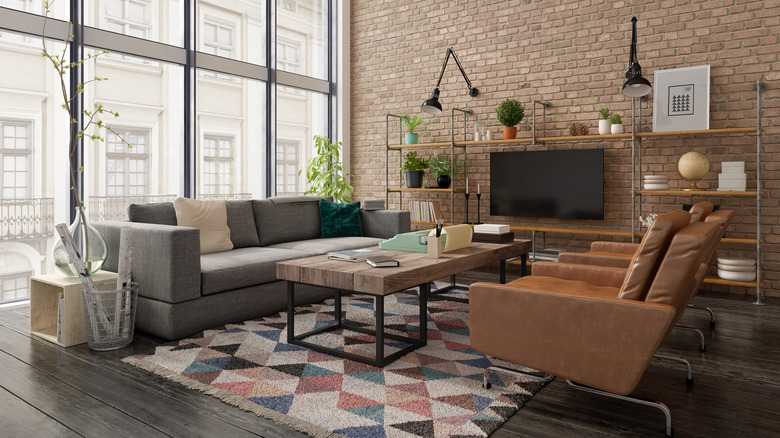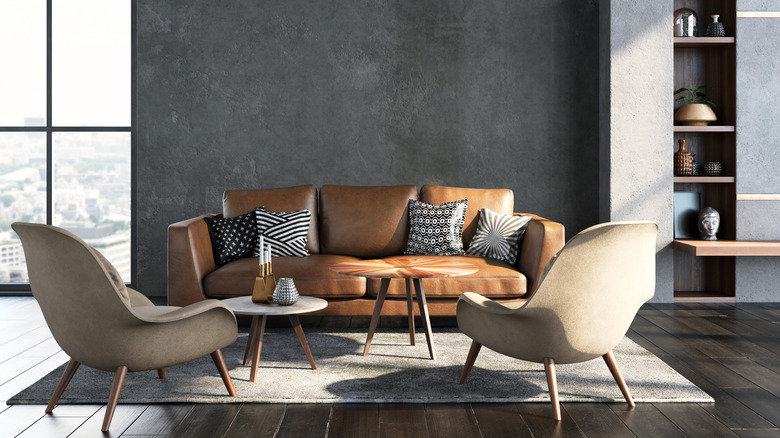The Best Color Palette For An Industrial Home Decor Style
If a warehouse turned into a loft sounds like your dream home, you might be into industrial design. For many, this style conjures images of new loft condos in a big city that were once warehouses or factories. While you will certainly find industrial interior design there, you don't need to live in a place that at one point featured an assembly line to obtain this rugged style.
Industrial interiors embrace elements like piping and ductwork that other homes hide behind drywall, says Vevano Home. But don't let this fool you into thinking the style is cold because it can still be cozy and comforting. As with most styles, this fashion is easier to pull off when some of the architectural characteristics are already in place. But fret not if you love the robust lines of this approach to design but live in a more traditional home; you can take the core elements of this interior decorating style and recreate them in your space. The best place to start is with the proper color palette.
A neutral base
The industrial style has a very neutral color scheme since it's meant to reflect the aesthetics of old warehouses by opting for a raw and unfinished look mixed with some sophistication. But the design nature of it is also flexible, according to Island Premium Paints: You're able to dress it up to be more modern or lean into using antiques, both of which work well within an industrial space. But the key to getting it right is using lots of neutrals.
The bulk of your colors should be shades of gray, white, black, and brown to pull off a true industrial style. This includes everything from permanent features to furniture and décor. Black helps to add drama, while white will highlight the open space. Gray falls right in the middle and can help soften these two bolder colors, while brown adds lots of comfort.
Though the style is majority comprised of neutrals, that doesn't mean you can't have any other color in the space. Just keep the major elements in shades of black, white, gray, or brown, and add pops of colors like navy blue, orange, red, green, or any hue that fits your personal style.
Add texture with materials
When creating an industrial color scheme, you should also consider the materials you use. The industrial aesthetic is as much about the materials as it is about the colors. Exposed brick is one of the most common features you'll see in converted lofts, so if you want to recreate this look in a traditional home, consider finding a wall to show off those interior bricks. Concrete and wood are also staples, says Interior Cravings. Concrete floors add a beautiful modern touch to the industrial aesthetic, while wood brings in warmth in the form of features like exposed ceiling beams or furniture.
Metal accents are another way to add an industrial element to your space; consider this material for light fixtures, furniture legs, and even art on your walls. A silver finish will feel more traditional, and a black finish feels more modern; gold can add a touch of glamor and femininity to the room. Finally, leather is a popular material within industrial homes as well, particularly for furniture like the sofa or side chairs.


